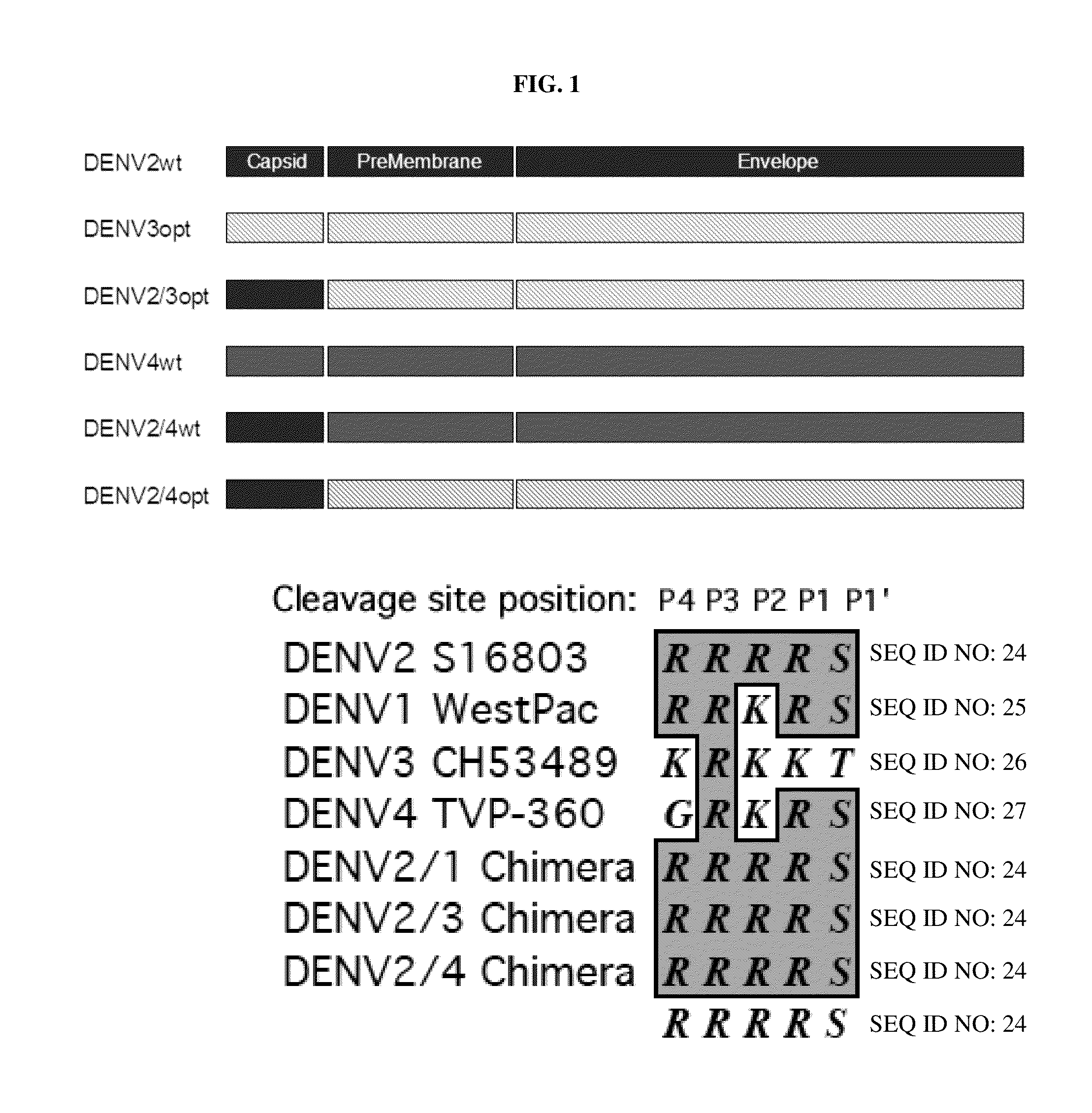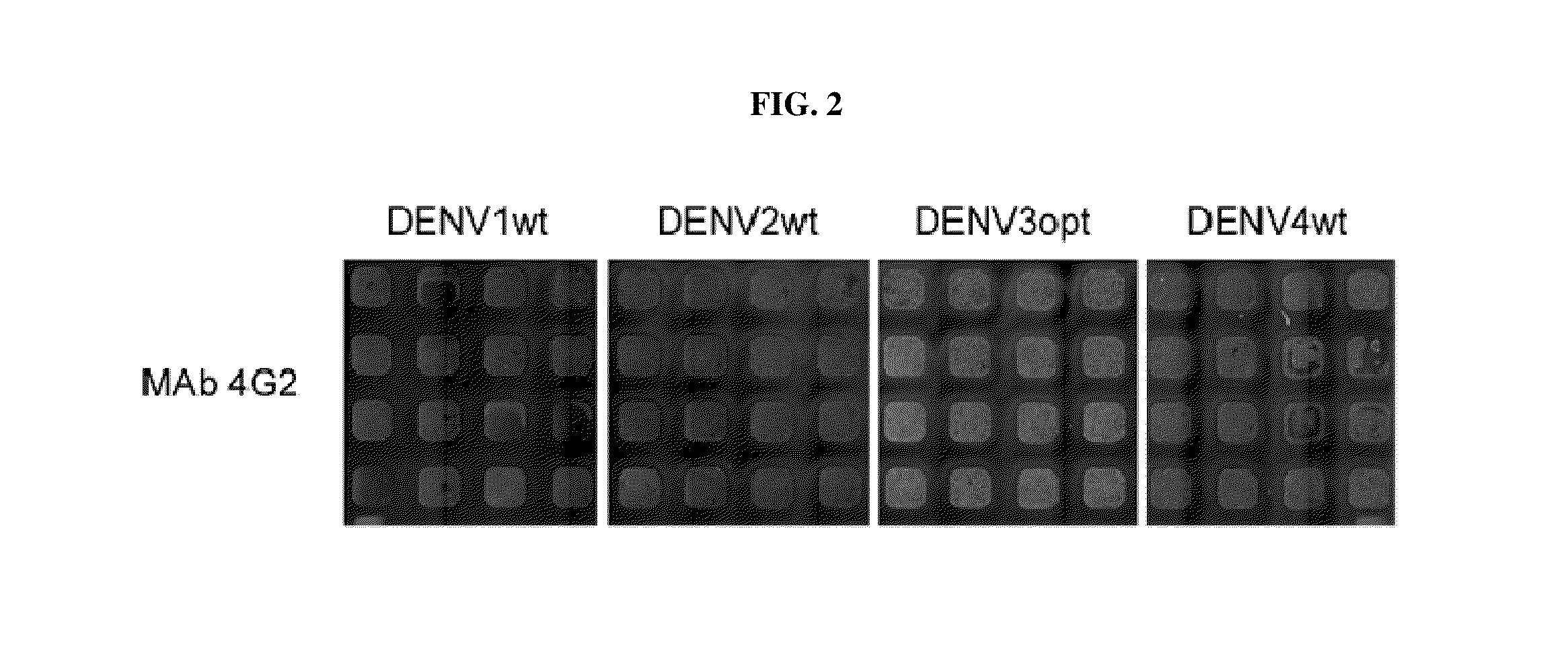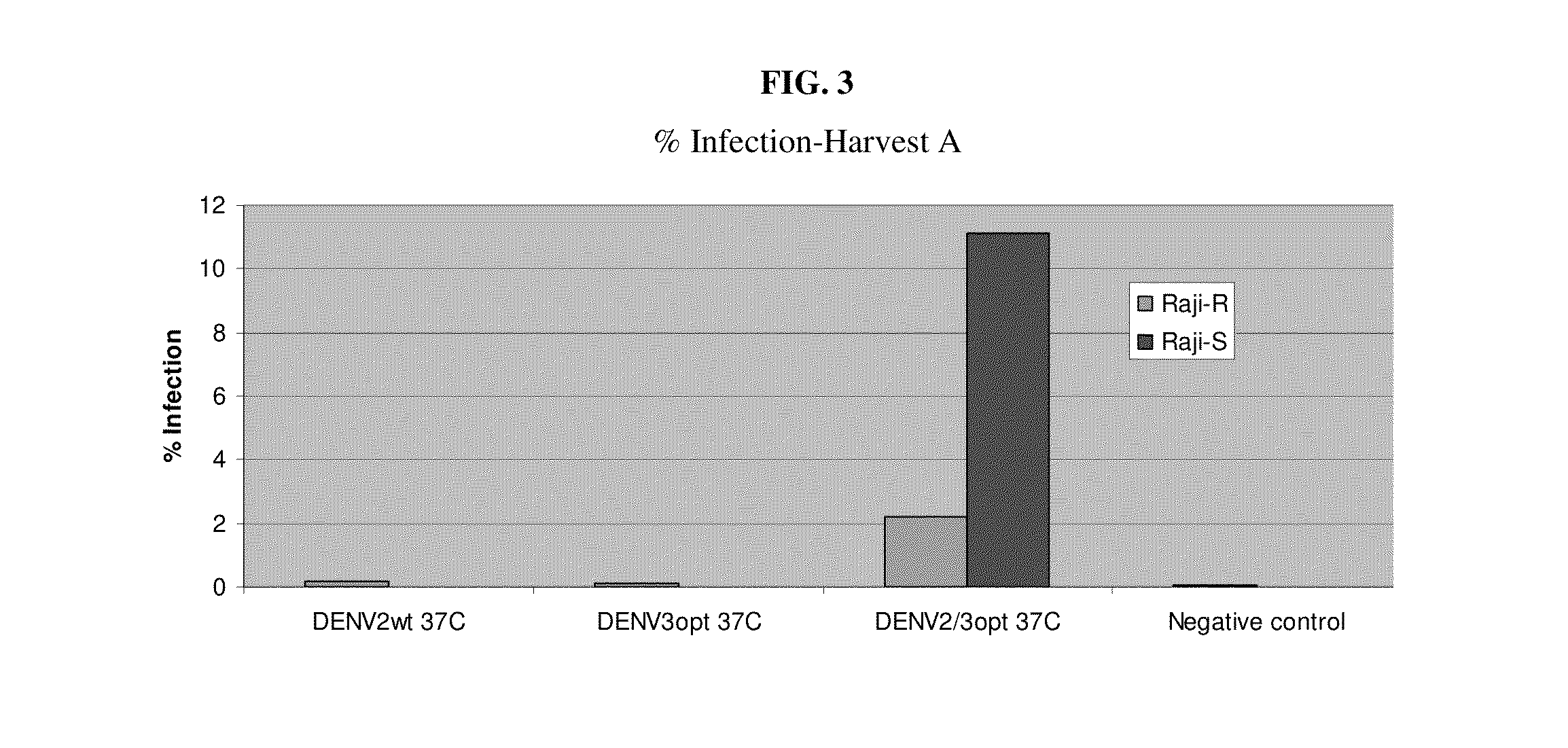Flavivirus reporter virus and methods of making and using the same
a reporter virus and reporter virus technology, applied in the field of fluvirus reporter virus and methods of making and using the same, can solve the problems of limited quantitative power of plaque assays, significant challenge in vaccination against denv, and increased clinical risk of infection
- Summary
- Abstract
- Description
- Claims
- Application Information
AI Technical Summary
Benefits of technology
Problems solved by technology
Method used
Image
Examples
example 1
[0104]Construction of a codon-optimized chimeric DENV CprME sequence. The structural genes for Dengue viruses encode for Capsid (C) Premembrane (prM) and Envelope (E) proteins (FIG. 1A). CprME sequence for Dengue serotype 2 was PCR amplified using clone 516803 with the following primers 5′-caccATGAATAACCAACGGAAAAAGGCGA-3′ (SEQ ID NO: 10) and 5′-TTTCACTATTAGGCCTGCACCATGACTCCCAAATAC-3′ (SEQ ID NO: 11). This PCR product was cloned into pENTR / D topo and subsequently moved into the expression vector pTRex-DEST-30, containing a CMV promoter and tetracycline operator sites. CprME sequence of Dengue serotype 4 was obtained by RT-PCR from RNA isolated from TVP360 virions using the following primers 5′-GGTTGATGGGCGGCCGCCACCATGAACCAACGAAAAAAGGTGGTTAGAC-3′ (SEQ ID NO: 12) and 5′-CCCTCTAGAGCGGCCTTATGCTTGAACTGTGAAGCCCAGAAACA-3′ (SEQ ID NO: 13) and was Infusion cloned as a NotI fragment into the TRex-pBR322 plasmid described below.
[0105]Plasmids containing wt DENV3 sequence are reported to be high...
example 2
[0110]Expression of DENV3 structural proteins from a codon-optimized DENV CprME sequence. DENV plasmids were used to test for expression of Dengue structural proteins in HEK-293T cells. Cells were plated in 384-well format at a density of 24,000 cells / well and transfected with plasmids encoding the CprME proteins from DENV1 wt, DENV2 wt, DENV3opt, and DENV4 wt using Lipofectamine 2000. 24 hours post transfection, cells were fixed in methanol and processed for immunofluorescence using a monoclonal antibody, 4G2 (100 μg / ml), which recognizes structural proteins of all 4 Dengue serotypes. Secondary antibody detection was with an anti-mouse Cy2 antibody. 293T cells transfected with wildtype DENV1, DENV2, and DENV4 constructs all exhibited faint staining with the 4G2 antibody. In contrast, cells transfected with the codon optimized DENV3 plasmid exhibited bright 4G2 staining, indicating that codon optimization of DENV3 results in enhanced expression of CprME in HEK-293T cells (FIG. 2).
example 3
[0111]Codon optimization of DENV2 CprME results in enhanced expression of Dengue structural proteins. Plasmids encoding wt DENV2 and codon optimized DENV2 are transfected into HEK-293T cells, or other eukaryotic cell types that can be transfected and that can express DENV proteins, to compare the expression levels of CprME. Cells are plated in 384-well format at a density of 24,000 cells / well and transfected with DENV2 wt or DENV2opt using Lipofectamine 2000. 24 hours post transfection, cells are fixed in methanol and processed for immunofluorescence using the monoclonal antibody 4G2 (100 μg / ml) with an anti-mouse Cy2 secondary antibody. HEK-293T cells transfected with DENV2 wt exhibit faint staining with the 4G2 antibody. In contrast, cells transfected with the codon optimized DENV2 plasmid exhibit bright 4G2 staining and express higher levels of CprME proteins.
PUM
| Property | Measurement | Unit |
|---|---|---|
| Fraction | aaaaa | aaaaa |
| Fraction | aaaaa | aaaaa |
| Fraction | aaaaa | aaaaa |
Abstract
Description
Claims
Application Information
 Login to View More
Login to View More - R&D
- Intellectual Property
- Life Sciences
- Materials
- Tech Scout
- Unparalleled Data Quality
- Higher Quality Content
- 60% Fewer Hallucinations
Browse by: Latest US Patents, China's latest patents, Technical Efficacy Thesaurus, Application Domain, Technology Topic, Popular Technical Reports.
© 2025 PatSnap. All rights reserved.Legal|Privacy policy|Modern Slavery Act Transparency Statement|Sitemap|About US| Contact US: help@patsnap.com



